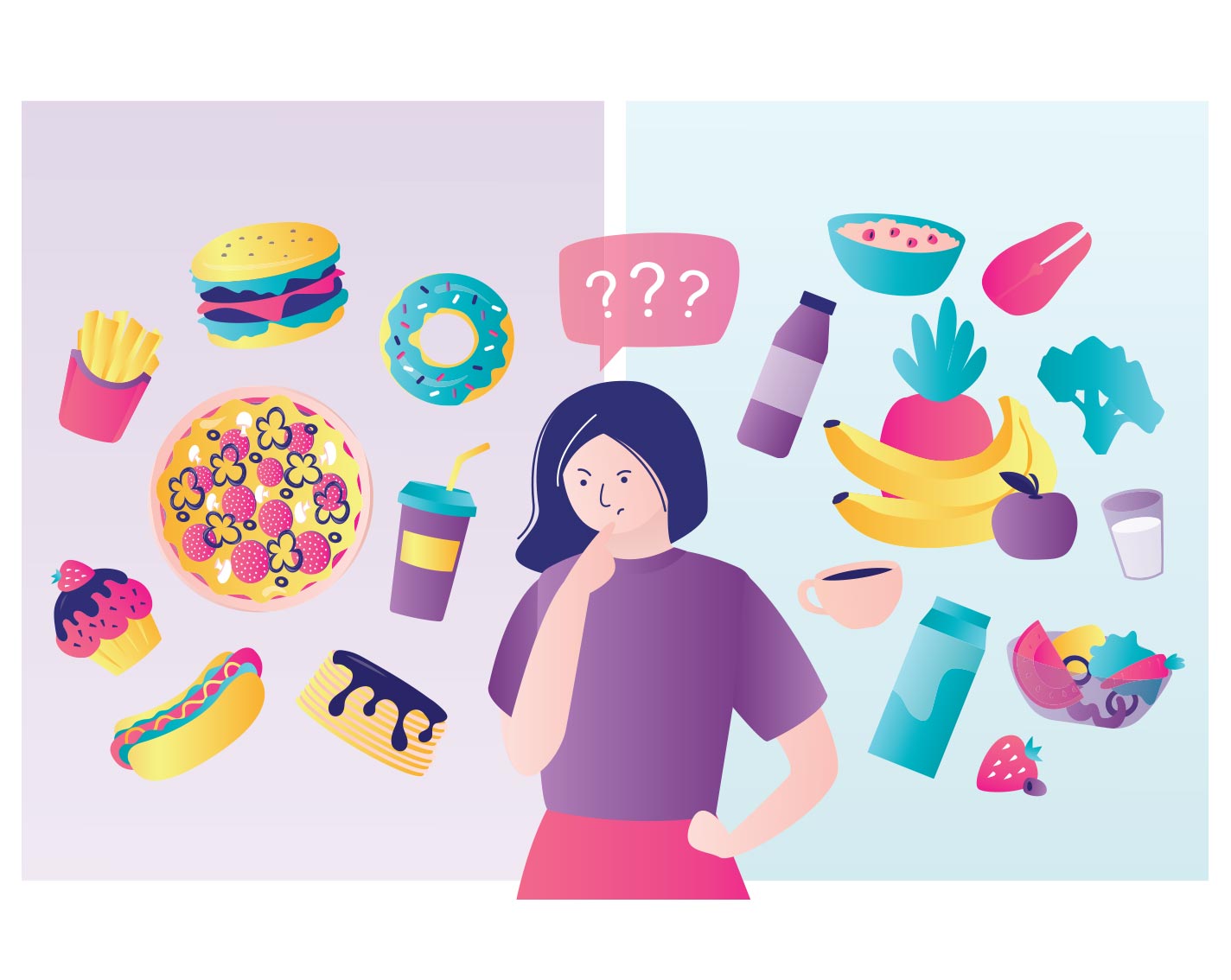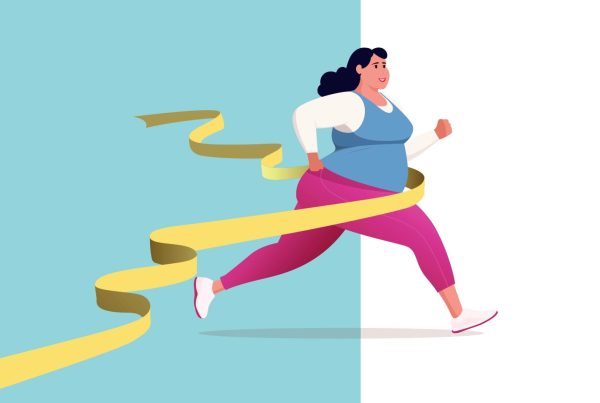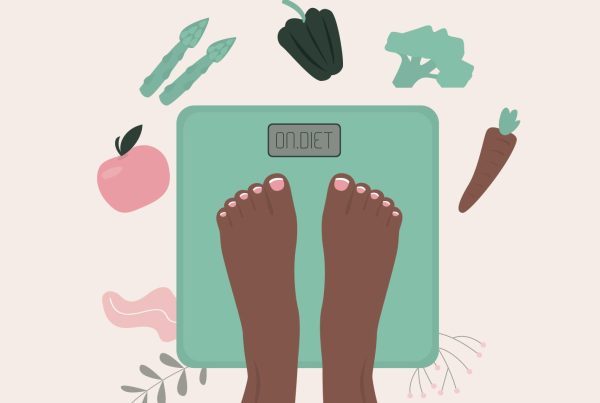Ever feel like your healthy fruit smoothie is sneakily turning into a sugar bomb in your bloodstream?
Turns out, when you eat your food matters almost as much as what you eat, especially if you’re navigating insulin resistance or rocking medications like Mounjaro (tirzepatide).
This isn’t some fringe diet advice. It’s a powerful, science-backed strategy that could change how you think about blood sugar, energy levels, and long-term health.
The Glucose Curve: Why Spikes are Sneaky Saboteurs
Here’s the facts: eating high-sugar foods (yes, even “natural” sugars in fruit) on an empty stomach causes a rapid glucose spike, followed by a crash that can leave you:
- 🥱 Tired
- 🍞 Craving more carbs
- 🧠 Foggy-headed
- 📈 Overstimulating insulin (which worsens insulin resistance over time)
“Glucose Spike Rollercoaster” – show blood sugar spikes with and without fiber-first meals.
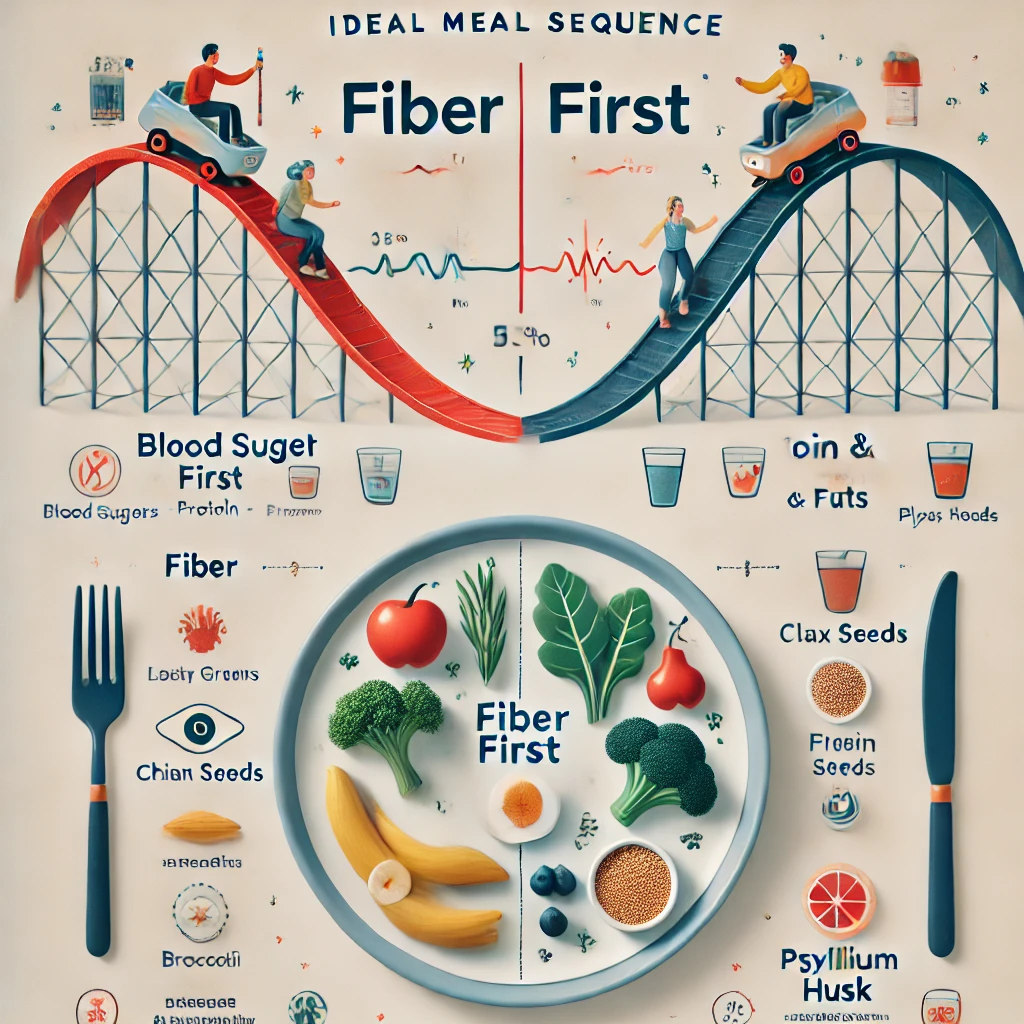
The Order of Eating Matters – A Lot
Science has shown that eating your fibre and complex carbs BEFORE sugar or starches can flatten the glucose curve by up to 30%. That means:
- Less strain on your pancreas,
- More stable energy,
- Reduced fat storage signals from insulin.
💬 Nutrition nerd moment: This principle is backed by studies like Shukla et al. (2015) that explored how food order affects post-meal glucose and insulin levels.
Fiber First: The Glucose Bodyguard
Think of fiber as your body’s natural glucose buffer:
- 🧱 Slows digestion.
- 🛡️ Blocks sugar absorption spikes.
- 🌿 Feeds the good gut bacteria (hello, metabolic health!).
“Top 5 Fiber-First Foods” – leafy greens, flax, chia seeds, psyllium husk, broccoli.
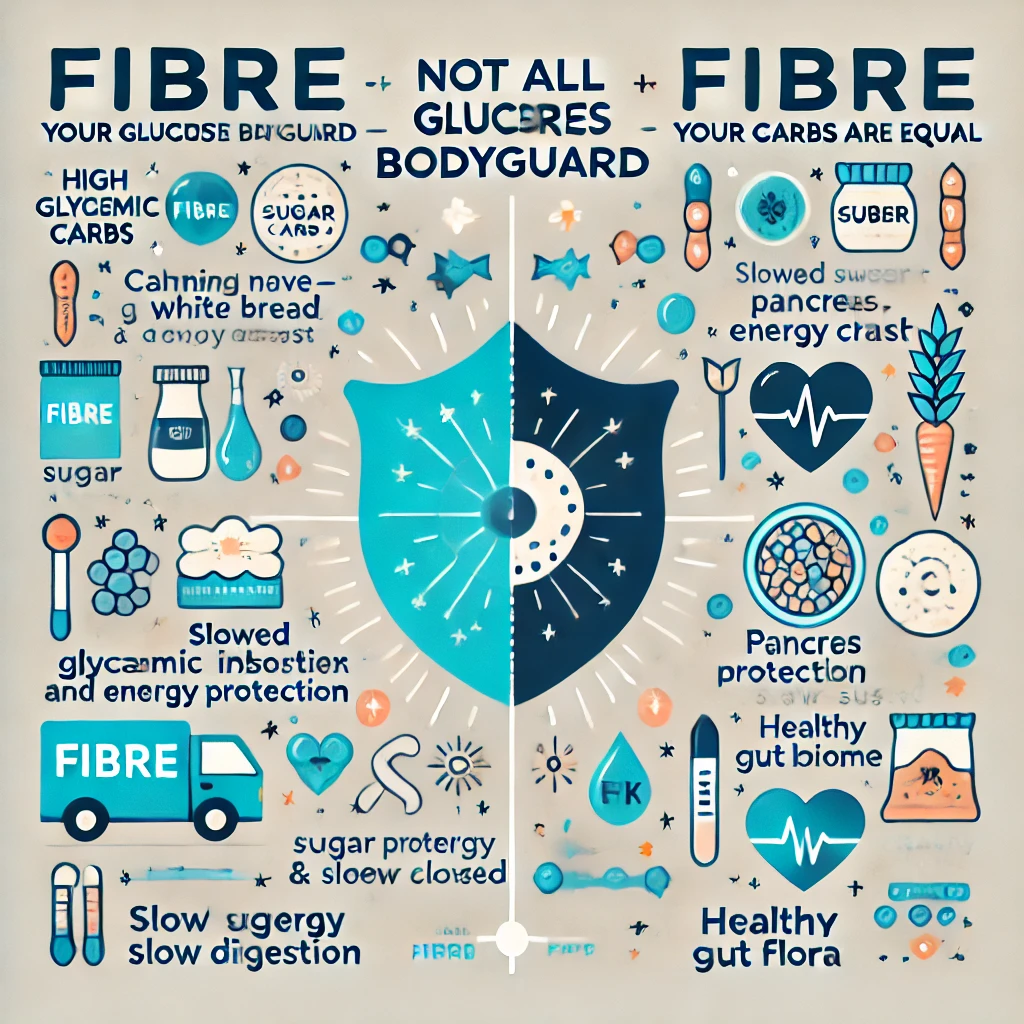
Complex Carbs: Not All Carbs Are Created Equal
Contrary to what carb-phobia suggests, complex carbs like sweet potatoes, lentils, and oats:
- Have low glycaemic indexes
- Digest slowly and keep you full longer
- Provide essential vitamins, minerals, and resistant starch for gut and insulin health
Eating Smart with Mounjaro (or GLP-1 Agonists)
If you’re using Mounjaro, Ozempic, or any GLP-1 weight loss medication:
- Eating fibre-rich, low-GI meals helps you avoid nausea (common side effect)
- Amplifies the medication’s benefits by further slowing gastric emptying
- Enhances insulin sensitivity and reduces glucose surges
💬 Think of it as medication + meal order = metabolic magic.
Your Simple, Sustainable Food Order Blueprint
🥦 Step 1: Start with fiber (leafy greens, veggie soup, psyllium water)
🍳 Step 2: Add protein & healthy fats (eggs, avocado, seeds)
🥔 Step 3: Follow with complex carbs (quinoa, legumes)
🍎 Step 4: End with fruit or dessert
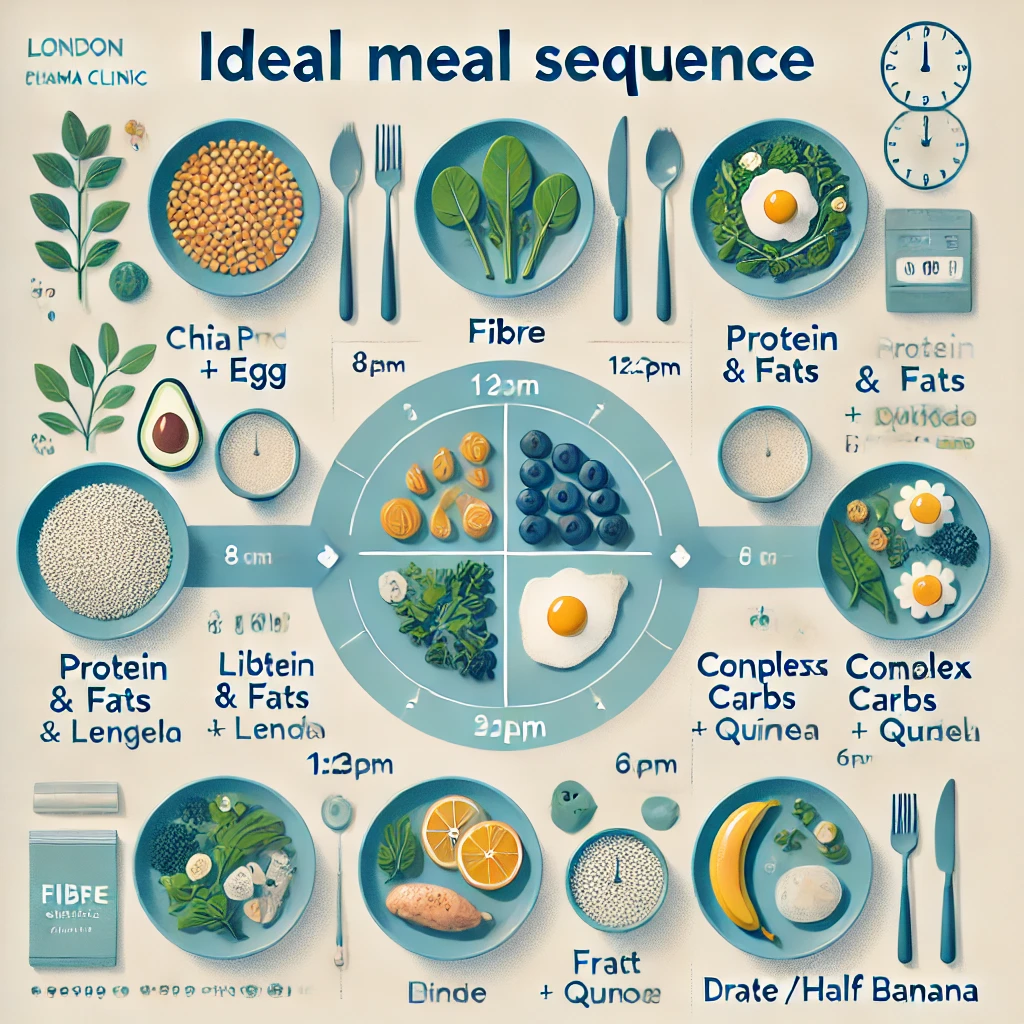
📅 Sample Day in the Life of a Glucose-Savvy Meal Plan
| 🕐 Time | Meal | Notes |
|---|---|---|
| 8:00am | Chia pudding with flax + a boiled egg | Fiber + protein = stabilized start |
| 12:30pm | Lentil salad with greens + olive oil | Followed by orange slices |
| 6:00pm | Grilled chicken, quinoa, and steamed kale | Dessert: 1 date or half banana |
Real Talk: Why This Works (and Sticks)
This strategy:
- Doesn’t cut out fruit 🍓 (we love fruit)
- Is medication-friendly
- Keeps your blood sugar in a happy, flat-ish range
- Doesn’t feel restrictive
And most importantly: it’s something you can actually do for life.
Bonus: Evidence Nuggets You Can Trust
📌 Eating vegetables before carbs lowered postprandial glucose by up to 30%.
Shukla et al. (2015). Diabetes Care.
📌 Fiber and resistant starch improve insulin sensitivity across diverse populations.
Robertson et al. (2005). Diabetologia.
📌 GLP-1 drugs are most effective when paired with dietary glucose management.
Nauck & Meier (2018). Nature Reviews Endocrinology.
✍️ Final Forkful
Eat your veggies first. Not because your mum said so, but because your blood sugar curve depends on it. Whether you’re on Mounjaro, managing prediabetes, or just trying to avoid the mid-day crash, this is your cheat code.
✨ Start your meals with plants. Finish with fruit. Your insulin will chill out, and so will you.

